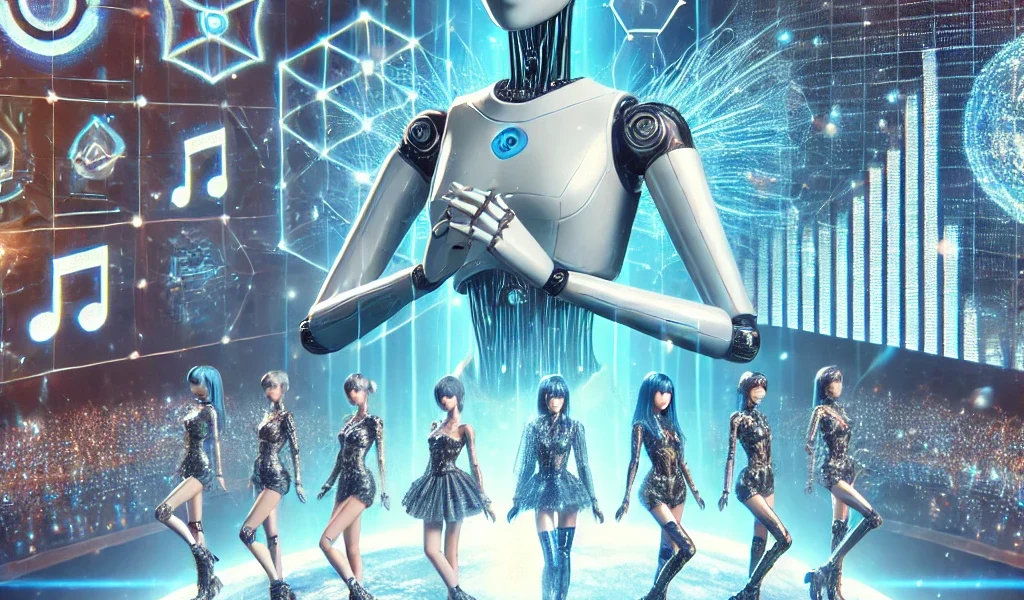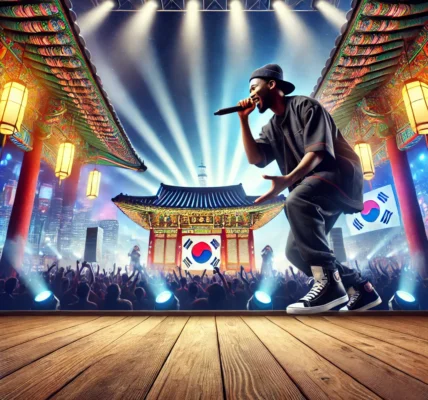The world of entertainment is constantly evolving, and in recent years, South Korea has been at the forefront of innovation with the emergence of AI and virtual idols. From AI-generated music to fully digital performers, these virtual idols are changing the landscape of K-pop and the broader Korean entertainment industry. With technology advancing rapidly, these digital creations are gaining real-world popularity, challenging traditional notions of celebrity and performance.
In this article, we will explore the rise of AI and virtual idols in Korean entertainment, how they are created, the impact they are having on the industry, and what the future may hold for this exciting new trend.

1. The Emergence of AI and Virtual Idols
Virtual idols are digital characters designed to perform music, dance, and interact with fans just like human performers. These idols are not constrained by physical limitations, and they often perform using a combination of AI technology, holograms, and motion capture.
K-pop’s Pioneering Role
K-pop has always been at the cutting edge of global pop culture, and the introduction of virtual idols is no exception. South Korea is home to some of the most advanced digital entertainment technologies, and K-pop agencies have begun to experiment with AI-driven characters that blur the line between fantasy and reality.
Example: K/DA
One of the most successful virtual idol groups to date is K/DA, a virtual K-pop girl group created by Riot Games. K/DA was formed as part of the promotional content for the video game League of Legends, and their debut single “POP/STARS” became an international hit, accumulating millions of views on YouTube. The group consists of virtual characters but is voiced by real K-pop singers such as Soyeon of (G)I-DLE.
What Makes AI Idols Different?
AI idols take the concept of virtual idols a step further by being entirely powered by artificial intelligence. These digital performers can generate their own content, including music and dance routines, using AI algorithms. AI idols don’t require the physical presence of a human performer, making them versatile and capable of “working” around the clock.
2. How AI and Virtual Idols Are Created
Creating an AI or virtual idol involves a combination of advanced technologies, including computer graphics (CG), motion capture, voice synthesis, and AI-driven music composition. Here’s a look at the technology behind these digital performers:
1. Computer Graphics (CG)
Virtual idols are typically rendered using high-quality CG to create realistic 3D avatars. These avatars can be customized to have specific physical attributes, facial expressions, and outfits. Their appearance can be tweaked to align with fan preferences, creating a highly appealing and marketable persona.
2. Motion Capture
Motion capture technology allows virtual idols to “dance” in realistic ways. Human dancers wear suits equipped with motion sensors, and their movements are recorded and transferred to the digital avatar. This technology ensures that the virtual idol’s dance moves are fluid and believable.
3. Voice Synthesis and AI
One of the key innovations in AI idols is voice synthesis. Advanced AI algorithms can create realistic vocal performances, allowing virtual idols to “sing” without the need for a human voice actor. In some cases, AI can even generate lyrics and compose music, creating a fully autonomous performer.
Example: Vocaloid Technology
The most famous example of voice synthesis technology is Vocaloid, a voice synthesis software that has given rise to popular virtual idols like Hatsune Miku. While not a K-pop idol, Hatsune Miku’s success has inspired many in the K-pop industry to explore similar possibilities with AI and virtual idols.
3. The Appeal of Virtual Idols
Virtual idols offer several advantages over traditional human performers, making them highly appealing to entertainment companies and fans alike.
1. No Physical Limitations
Unlike human idols, virtual idols don’t need to rest or recover from injuries. They can perform at any time, in any location, and are not bound by the physical constraints of the real world. This allows for more frequent content production and more dynamic performances.
2. Flexibility in Design
Virtual idols can be customized to meet the specific preferences of their target audience. Their appearance, personality, and style can be adjusted to maximize their appeal. This gives entertainment companies more control over branding and marketing.
3. Interactive Experiences
With the integration of augmented reality (AR) and virtual reality (VR) technologies, fans can interact with virtual idols in ways that would be impossible with human performers. For example, fans can attend virtual concerts, have personalized interactions with idols through AI chatbots, and even “meet” idols in virtual environments.
4. The Impact on the K-pop Industry
The rise of virtual idols is beginning to reshape the K-pop industry in several ways. While traditional human idols are still incredibly popular, virtual idols are carving out their own niche in the market.
1. Expanding Global Reach
Virtual idols are particularly appealing to international audiences. Since they exist in the digital realm, they can perform in multiple languages, adapt to different cultural contexts, and easily participate in international collaborations. This gives them a global reach that transcends borders.
2. New Revenue Streams
Virtual idols offer new ways to monetize content. From virtual concerts to merchandise featuring the digital likeness of the idol, entertainment companies can generate revenue in ways that aren’t possible with human performers. For example, virtual idols can “tour” multiple countries simultaneously through hologram performances.
3. Reducing Pressures on Human Idols
K-pop idols often face grueling schedules, intense public scrutiny, and the pressure to maintain a perfect image. Virtual idols, on the other hand, are immune to these pressures. This allows entertainment companies to continue generating content without overworking their human idols, potentially reducing the mental health challenges that are prevalent in the industry.
5. The Future of AI and Virtual Idols in Korean Entertainment
As technology continues to evolve, AI and virtual idols are likely to become even more sophisticated. In the near future, we may see virtual idols collaborating with human performers, or even becoming the dominant force in K-pop.
1. AI-Generated Music
AI has already been used to generate music in various genres, and this trend is expected to grow. In the future, AI idols could compose their own songs, adjust their performances based on audience feedback, and even evolve their personalities based on fan interaction.
2. Integration with the Metaverse
The rise of the metaverse—a digital universe where people interact using avatars—offers exciting possibilities for virtual idols. Fans could attend virtual concerts, meet their idols in digital worlds, and participate in interactive events, all from the comfort of their own homes.
Conclusion: A New Era of Entertainment
The rise of AI and virtual idols represents a bold new direction for the Korean entertainment industry. By combining cutting-edge technology with the allure of K-pop, South Korea is once again pushing the boundaries of global entertainment. As these digital idols become more sophisticated and integrated into everyday life, they are set to change the way we think about celebrity, performance, and fandom.










